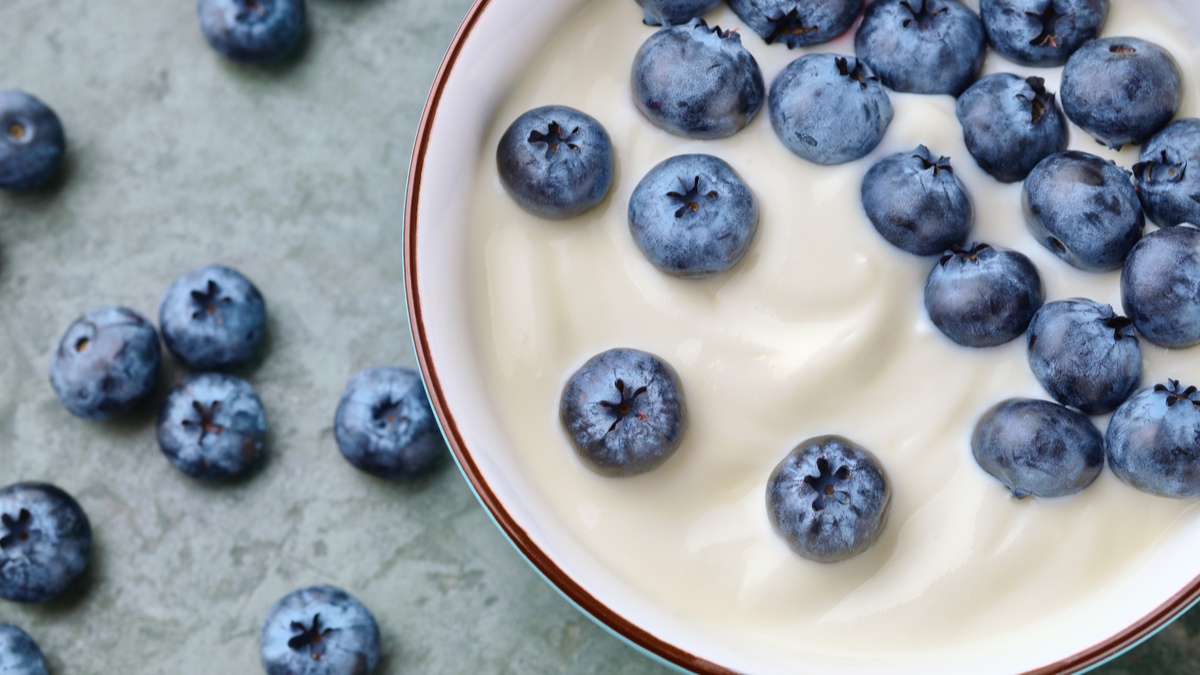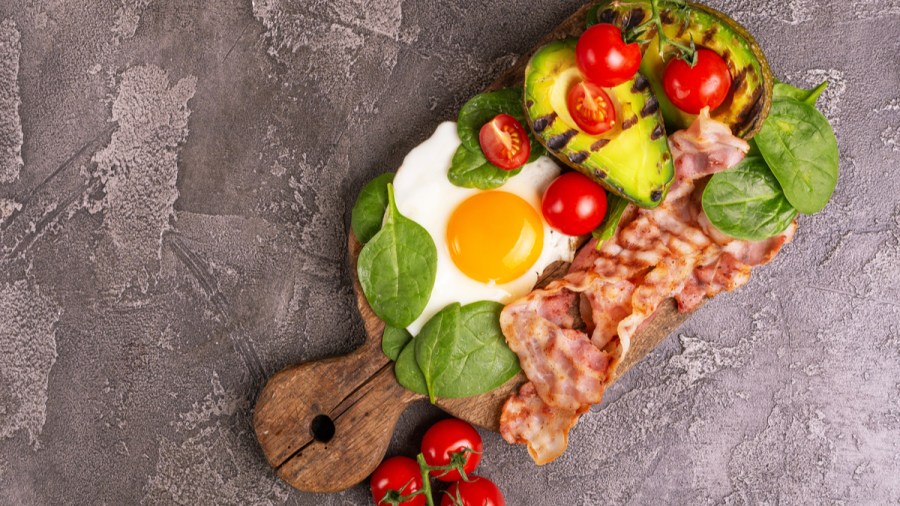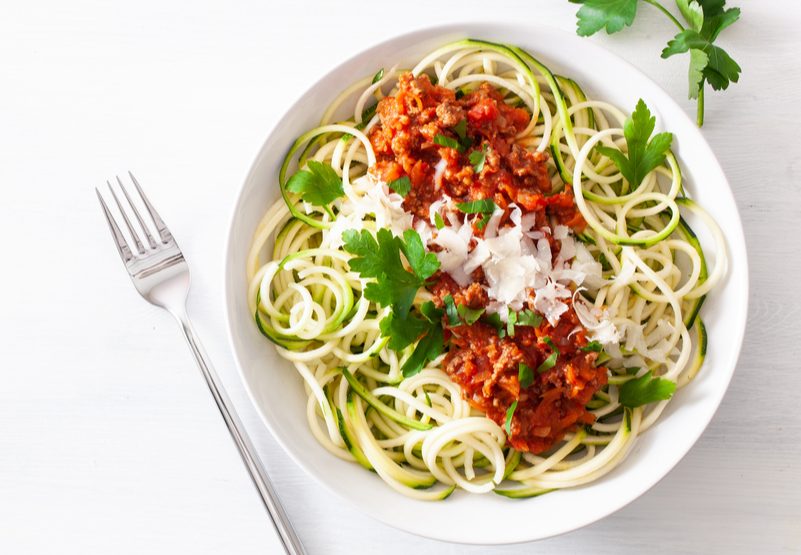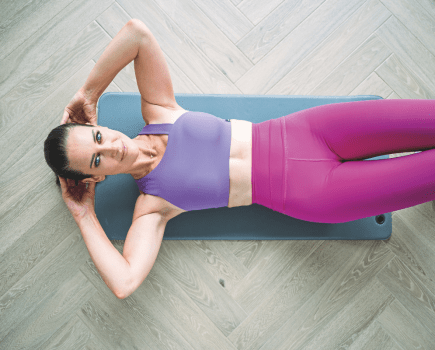You’ll no doubt have heard of the ketogenic diet, and its sister the low carb high fat (LCHF) diet. Nutritionist and low-carb expert Sarah Flower explains why they help reverse type 2 diabetes and help you lose weight.
You may think low carb high fat is just the latest fad when it comes to diets but you may be surprised to know it has been recommended by doctors for the treatment of diabetes and obesity-related illnesses for well over 100 years, even before our diets changed so dramatically.
It was also, interestingly, used as a treatment for epilepsy in the early 1920s.
Diabetes was always known as sugar diabetes and it made sense that this disease of sugar, meant you had to cut out the sugar.
If we look at our current Western diet, it would be no surprise to anyone to say it is highly processed, high in inflammatory oils (processed) and high in sugars.
What exactly is sugar?
Sugar is a very basic term and does not just mean the white granulated stuff you add to a cup of tea. In metabolic terms, sugar refers to food that converts inside the body to glucose.
Foods that break down into glucose are carbohydrates (refined and complex), which in turn flood your body with glucose. This glucose must be either used as energy or stored as fat, and it’s the role of insulin to control where the glucose goes.
When you eat a diet high in carbs, you are constantly calling on insulin and, eventually, it stops listening. Your cells then become saturated in the sugars, and the insulin struggles to push it into your cells.
Cut down the sugar you eat
The current medical approach is to give medication (insulin) to help push more glucose into the cell, but it’s far better to just cut down on the sugar you eat.
With a low-carb, high-fat (LCHF) diet, you fill up on foods rich in healthy fats while also having moderate amounts of protein.
Count carbs, not calories when you go low carb high fat
There is no counting calories but there is counting carbs, which should be less than 30g per day. You also cut out all processed food, grains, sugars and starches.
This might sound restrictive, however, due to the diet’s ability to stabilise blood sugar, insulin and related hormones, you actually stop craving food and feel fuller for longer, making it one of the easiest ways to lose weight.
Know your fats
Research shows a diet of natural fats does not increase unhealthy cholesterol either – it can be protective. It’s important to keep up your intake of fat not only to prevent inflammation but also to prevent or reverse insulin resistance.
You cannot follow a low-carb and low fat diet at the same time as you would struggle to maintain it and start feeling poorly, so stick to the following guidelines:
- Fats to avoid: Processed vegetable and seed oils including sunflower, rapeseed (also called canola), corn, and sesame; margarines, vegetable shortenings and all butter substitutes.
- Fats to increase: Real butter, coconut oil, duck and goose fat, avocados, nuts, cream, full-fat milk and full-fat yoghurt. These fats are in their natural state and are stable. If you prefer liquid oil to cook with, choose good-quality olive or avocado oil, however, these are less stable at high heats, meaning they burn and oxidise, which ages your body, so it’s better to save them for dressings. Also buy good quality meat and eat the fat.
How do you do low carb high fat eating?
- Ditch grains. This may at first seem daunting, but it is quite simple. Most of my clients see a dramatic improvement in their health by avoiding grains, including less bloating, IBS, inflammation, and headaches. We use a variety of flour substitutes so you can still have cakes, bread etc, but just made from scratch with the correct ingredients such as almond flour and coconut flour.
- Limit fruit. Fruit is nature’s candy, so eat it sparingly. Berries have the least amount of sugar so are the best choice. If you eat plenty of above-ground vegetables, you will not go without vitamins and minerals.
- Choose low-starch vegetables. This includes cauliflower, cabbage, avocado, broccoli, courgette, spinach, asparagus, kale, green beans, and Brussel sprouts. Sea vegetables are also low carb so can be enjoyed.
- Only eat when hungry. We have got into the habit of snacking throughout the day, which continually stimulates an insulin response. With the LCHF diet you are not stimulating the hunger/craving hormone ghrelin, so you don’t tend to get as hungry. As you eat more fat, you will become more satisfied, cravings will diminish, and you’ll stay fuller for longer.
Busting some myths about your diet
Myth 1: You need sugar
Sugar and fructose are not essential to our health and have no nutritional requirement. Sugar contains calories but has no essential nutrients – just empty calories. We are led to believe that brown sugar, honey, agave, maple syrup are better forms as they are more natural, less refined, but sadly our body still sees it as sugar and treats it in exactly the same way. Glucose is found in every cell, but our bodies can produce this naturally through protein, meaning glucose is not essential to our health.
Myth 2: Fruit and fruit juices are good for you
Fruit is nature’s candy so limit consumption to treats only. Always eat whole fruit as the fibre slows down the digestion and does not flood the liver with fruit sugars (fructose). High fructose diets have been linked to non-alcoholic fatty liver disease, something we are now seeing in children. Fructose has also been implicated in heart disease, raising the formation of triglycerides and LDL cholesterol. Switch to eating more vegetables and leave fruit as an occasional treat and avoid fruit juices and fruit smoothies.
Myth 3: Diabetes has no relation to diet
Sugar and a diet of refined carbohydrates can wreak havoc on insulin response, resulting in insulin resistance and ultimately Type 2 Diabetes. You can reverse type 2 diabetes by cutting down, if not out, all sugar and reducing your carbohydrates.
Myth 4: Obesity is caused by fat
A high sugar/carbohydrate diet stimulates your insulin response, and this pushes the glucose in your blood to a safe place. This would normally mean storing the glycogen (glucose) in the liver or muscles to be used.
However, due to your saturation of sugar and carbs, if you eat too many, these stores are always full, so the glucose ends up being pushed into fat stores, normally in your visceral fat where it gets locked away.
You rely on the hormone glucagon to release this stored fat to use as fuel but while you are consuming lots of carbs and sugars, glucagon response is shut off. As you increase insulin, you decrease glucagon.
Myth 5: Calorie counting is the only way to lose weight
Whilst calorie counting can work in the short term, your body soon adapts to the lower level, slowing down your metabolism to account for the deficit. When you eat less and move more, it results in you getting hungry, grumpy, and tired, and as you progress you have to reduce your calories more and more to get any weight loss effect.
In the quest for calorie counting, we have seen a rise in Frankenstein foods all claiming to be low calorie and low fat, therefore supposedly healthy, but that is far from the truth.
Can 16 jellybeans, amounting to 350 calories, really be a better choice than a small salmon salad at 420 calories? A pot of low-fat yoghurt can contain as much as seven teaspoons of sugar.
This spikes your blood sugar, putting more pressure on your body to produce more and more insulin to try to regulate this fluctuation.
Handy swaps to help you go low carb high fat
- Replace spaghetti Bolognaise with spiralized courgettes.
- Replace rice with broccoli or cauliflower rice.
- Replace the potatoes in a roast dinner with extra veggies and meat.
- Replace burger buns with LCHG, grain-free buns, or avoid the bun altogether and have extra salad.
- Ditch the red kidney beans in a chilli con carne and serve with broccoli or cauliflower rice.
- Replace the pasta sheets in a lasagne with strips of courgette, aubergine, butternut squash, cabbage leaves or even bacon.
- Instead of mashed potato, make cauliflower mash with lots of cheese and butter. And you can also mash swede, turnip or celeriac.
- Replace breaded items such as chicken nuggets, fish fingers and scotch eggs with your own homemade versions, using ground pork scratchings combined with parmesan to make a crunchy coating. Simply dip the food into a beaten egg, then dip into the ground scratchings and bake as usual.
- Replace breakfast cereals with keto granola or simply have a bowl of full-fat yoghurt with a handful of berries and nuts.
- Replace crisps with homemade vegetable crisps, such as kale crisps, or opt for salty or spicy nuts. You can also buy crisps made from dehydrated meat, and make Parmesan crisps for a cheesy, salty hit.

What does a typical LCHF diet week look like?
Once you are used to this way of eating, you won’t get hungry so often so might only want 1-2 meals per day. So although the below suggests three meals plus snacks, you’ll soon find you don’t want all of those and won’t feel hungry.
Breakfast ideas
- Greek full-fat yoghurt with berries
- Scrambled egg with thick gammon slices on low-carb bagel
- Poached eggs, sulphite-free bacon and avocado
- Low-carb granola (i.e. nut and seed-based), berries and dollop of yoghurt
- Mini frittata muffins
Lunch ideas
- Broccoli and stilton soup with low carb/grain free roll
- Egg and tuna salad
- Chicken and bacon salad
- Spicy chicken flaxseed wrap with lettuce avocado and mayo
- Crustless ham and cheese quiche with salad
Main meal ideas
- Vegetarian nut roast
- Roast beef and vegetables
- Ham and leek cheesy bake
- KFC-style low-carb chicken with salad
- Courgetti Bolognese
- Beef and mushroom stroganoff
- Haddock, egg and gruyere bake
- Creamy chicken and thyme
Desserts
There are plenty of ways to make LCHF desserts. For example, try my No bake lemon cheesecake and chocolate fudge (see recipes).
Quick snacks
This is an easy reference to quick snacks you can stock up on in your fridge, ideal for when you are hungry, or to take with you to work or on a day out.
- Hard-boiled eggs
- Nuts and seeds (not peanuts)
- Dark chocolate (at least 85% cacao content)
- Full-fat cheese
- Biltong and beef jerky
- Salads
- Olives
- Fish, including salmon and tuna
- All meats
- Full-fat cream or natural yoghurt with berries
- Nut butters (such as almond butter) with vegetable sticks
- Parmesan crisps
- Pork scratchings
Sarah Flower is the author of 22 health and cookery books including Eating to Beat Type 2 Diabetes (£10.99), The Sugar-Free Family Cookbook (£12.99), and Low Carb Slow Cooker (£15)
Find out more about the low carb high fat (LCHF) way of eating.









